Lipid Management in Patients with Diabetes Mellitus
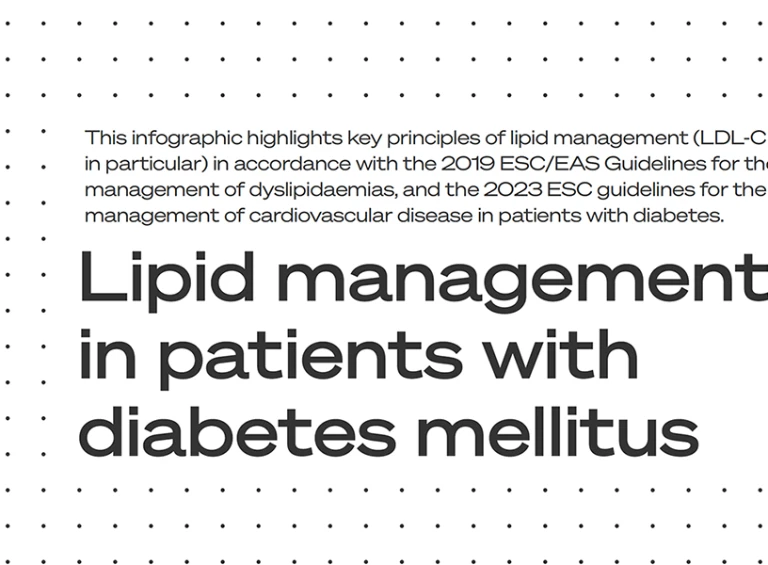
Cardiovascular disease (CVD) is responsible for >4 million deaths in Europe each year. The 2019 ESC/EAS Guidelines for the management of dyslipidaemias define those with documented ASCVD, type 1 or type 2 diabetes mellitus, very high levels of individual risk factors, or chronic kidney disease (CKD) as very-high CV risk.1
|
In very-high CV risk patients, the 2019 ESC/EAS dyslipidaemia guidelines recommend:1 |
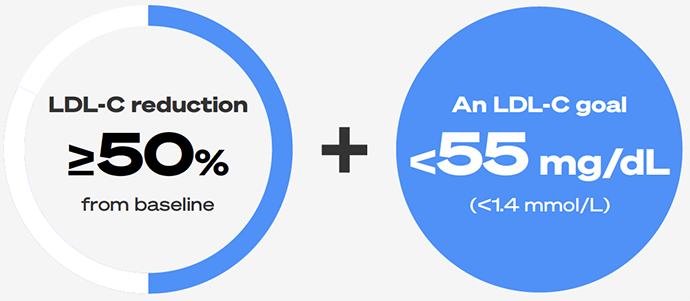 |
These patients require pharmacological intervention alongside lifestyle management to help reach targets.1
Intensity of lipid lowering treatment
|
Treatment |
Average LDL-C reduction |
|
Moderate intensity statin |
≈ 30% |
|
High intensity statin |
≈ 50% |
|
High intensity statin plus ezetimibe |
≈ 65% |
|
PCSK9 inhibitor |
≈ 60% |
|
PCSK9 inhibitor plus high intensity statin |
≈ 75% |
|
PCSK9 inhibitor plus high intensity statin plus ezetimibe |
≈ 85% |
Adapted from ESC/EAS Guidelines for the management of dyslipidaemias. 2019.1
No direct comparisons can be made between the above treatments due to the absence of head to head data.
|
The 2023 ESC Guidelines for the management of cardiovascular disease in patients with diabetes outline the same underlying principles for the management of dyslipidaemia, with the addition of more specific guidelines for patients with diabetes. Very-high CV risk patients with diabetes are also recommended an LDL-C reduction of ≥50% and an LDL-C goal of <55 mg/dL (<1.4 mmol/L).2
CV risk assessment and treatment targets All T2DM patients with established ASCVD are considered very-high risk.2
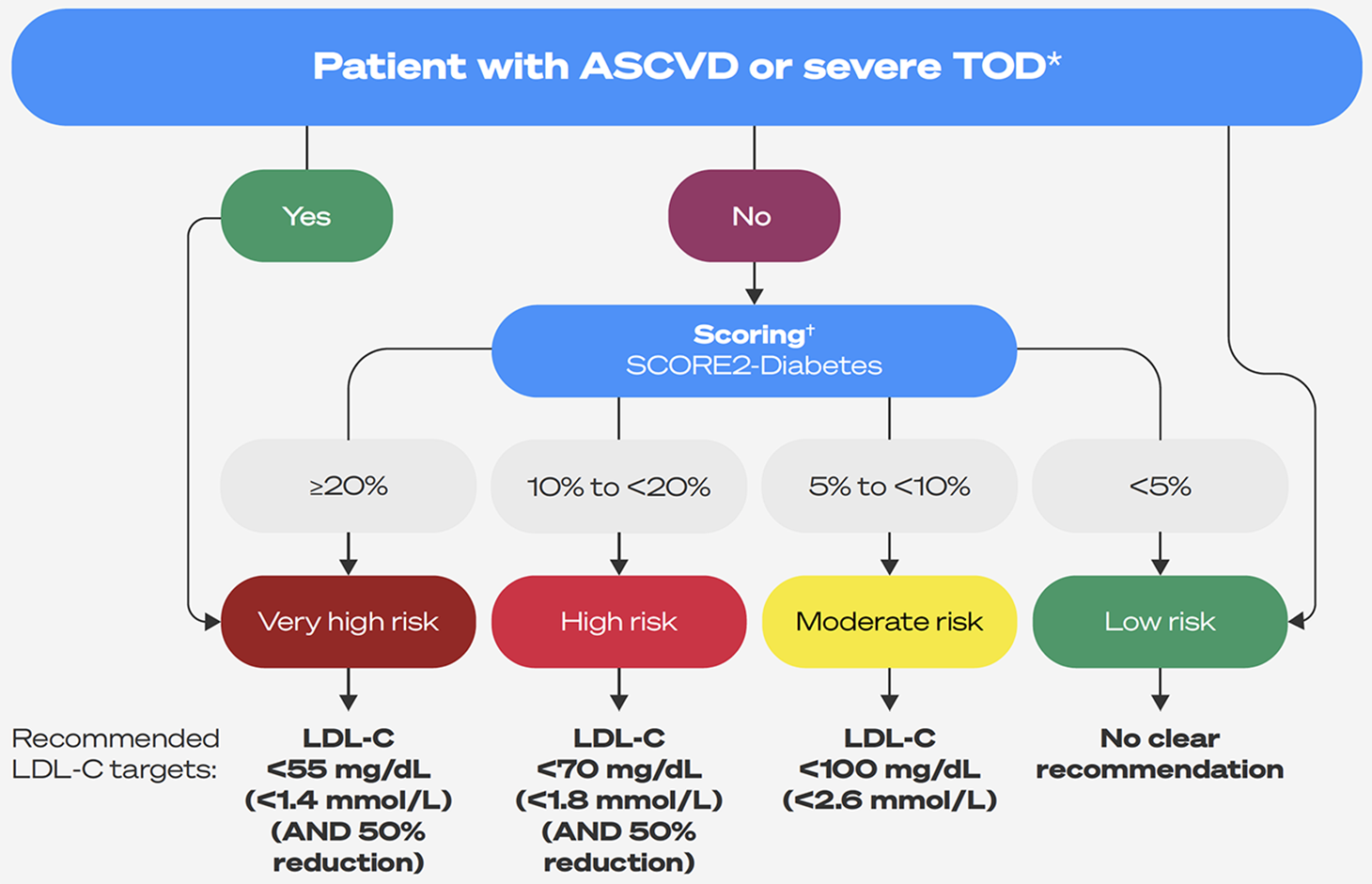
Adapted from ESC Guidelines for the management of cardiovascular disease in patients with diabetes. 2023.2 |
LDL-C management algorithm for patients with diabetes2
Level of recommendations:
|
High intensity statins are recommended as the first-choice LDL-C-lowering treatment in patients with diabetes and above target LDL-C levels. |
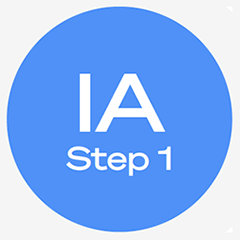 |
|
If the target LDL-C is not reached with statins, combination therapy with ezetimibe is recommended. |
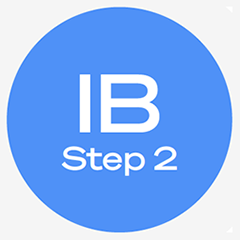 |
|
A PCSK9 inhibitor is recommended in patients at very high CV risk, with persistently high LDL-C levels above target despite treatment with a MTD statin + ezetimibe, or in patients with statin intolerance. |
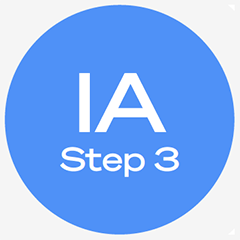 |
*Severe TOD defined as eGFR <45 mL/min/1.73m2 irrespective of albuminuria; or eGFR 45–59 mL/ min/1.73m2 and microalbuminuria (UACR 30–300 mg/g; stage A2); or proteinuria (UACR >300 mg/g; stage A3), or presence of microvascular disease in at least three different sites [e.g. microalbuminuria (stage A2) plus retinopathy plus neuropathy].2
†The thresholds (10-year CVD risk) suggested are not definitive but rather designed to prompt joint decision-making conversations with patients about intensity of treatment, as well as additional interventions. SCORE2-Diabetes refers to patients aged ≥40 years.2
ASCVD = atherosclerotic cardiovascular disease; CV = cardiovascular; CVD = cardiovascular disease; EAS = European Atherosclerosis Society;
eGFR = estimated glomerular filtration rate; ESC = European Society of Cardiology; LDL-C = low-density lipoprotein cholesterol; MTD = maximum tolerated dose; PCSK9 = proprotein convertase subtilisin kexin type 9; T2DM = type 2 diabetes mellitus; TOD = target organ damage; UACR = urine albumin-to-creatinine ratio
- Mach F, Baigent C, Catapano A, et al. 2019 ESC/EAS Guidelines for the management of dyslipidaemias. Eur Heart J. 2020;41:111–188.
- Marx N, Federici M, Schütt K, et al. 2023 ESC Guidelines for the management of cardiovascular disease in patients with diabetes. Eur Heart J. 2023;44:4043–4140.
